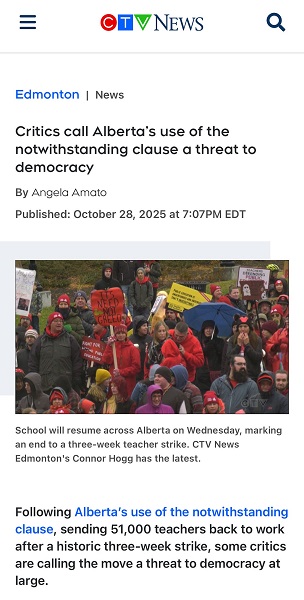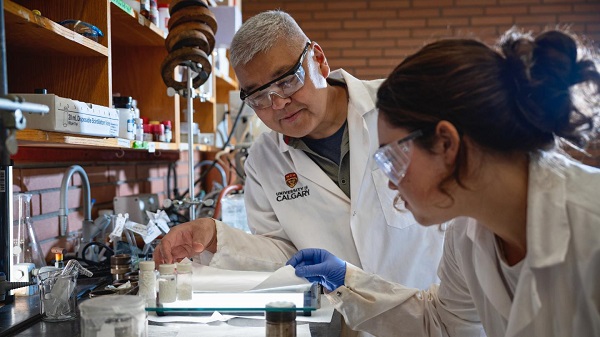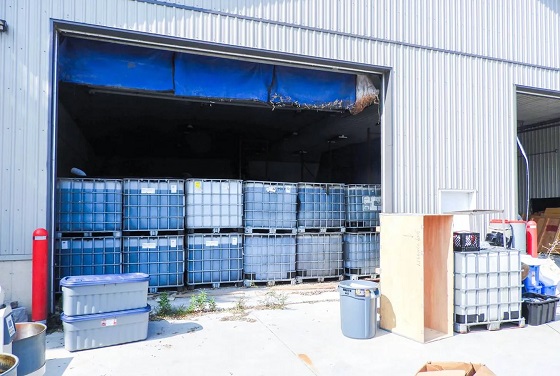Alberta
Province to respond to 358 COVID-19 cases in High River – Alberta Update

From the Province of Alberta
Update 35: COVID-19 pandemic in Alberta (April 17 at 4:15 p.m.)
There are now 1,124 confirmed recovered cases of COVID-19 in the province.
A total of 239 new cases have been reported, bringing the total number of cases to 2,397.
No Albertans have died since the last report.
Latest updates
- Cases have been identified in all zones across the province:
- 1,673 cases in the Calgary zone
- 429 cases in the Edmonton zone
- 135 cases in the North zone
- 77 cases in the Central zone
- 68 cases in the South zone
- 15 cases in zones yet to be confirmed
- Of these cases, there are currently 60 people in hospital, 13 of whom have been admitted to intensive care units (ICU).
- 400 cases are suspected of being community acquired.
- A total of 50 Albertans have died from COVID-19 to date: 34 in the Calgary zone, eight in the Edmonton zone, seven in the North zone, and one in the Central zone.
- To date, 270 cases have been confirmed at continuing care facilities, and 32 residents at these facilities have died.
- There have been 89,144 people tested for COVID-19 and a total of 92,805 tests performed by the lab. In the last 24 hours, 3,831 people have been tested.
- Effective immediately, Alberta Health Services will assume administration of Manoir du Lac in McLennan. Learn more here.
- The 310 call centre is assuming standard hours of operation, from 8:15 a.m. to 6 p.m. weekdays, and will not be open this weekend.
Expanded testing
- Alberta Health continues to closely monitor outbreak situations, and is working with employers and Alberta Health Services to expand testing to asymptomatic residents and staff in continuing care facilities and outbreak sites in the coming days. All workers from all companies at outbreak sites will be offered this opportunity.
- Additionally, Alberta’s testing capacity is rapidly expanding and anyone with symptoms anywhere in the province can now be tested.
- Those with symptoms of COVID-19, including cough, fever, runny nose, sore throat, or shortness of breath, should complete an online COVID-19 self-assessment. After completing the form, there is no need to call 811.
- Alberta’s testing capacity is currently approximately 7,000 samples per day, and the laboratory network is working to increase this capacity.
Camping reservations temporarily suspended
- Alberta Parks has suspended online campsite reservations and is refunding customers who have booked up to May 19.
- The decision is in line with other jurisdictions, such as Ontario, British Columbia, Saskatchewan and Parks Canada, which have also suspended or delayed camping reservations.
Wastewater management
- As the regulator of municipal wastewater systems, Environment and Parks is aware of reports from municipalities that some homeowners are flushing inappropriate items down toilets, such as disinfectant wipes or paper towels.
- Albertans should avoid flushing items not intended for toilets because they can block sanitary lines, create service disruptions and cause sewer backups.
Temporary suspension of applications for emergency social services funding
- Effective April 21, the Government of Alberta will be temporarily suspending applications for emergency social services funding to charities, not-for-profits and civil society organizations to support their COVID-19 response.
- Government has received more than 600 applications for the $30-million fund. Current applications are being reviewed, and approvals for urgent requests will occur before reopening application intake.
Mental health supports
- Confidential supports are available to help with mental health concerns. The Mental Health Help Line at 1-877-303-2642 and the Addiction Help Line at 1-866-332-2322 are available between 7 a.m. and 11 p.m., seven days a week.
- Online resources provide advice on handling stressful situations or ways to talk with children.
Family violence prevention
- A 24-hour Family Violence Information Line is available at 310-1818 to get anonymous help in more than 170 languages.
- Alberta’s One Line for Sexual Violence is available at 1-866-403-8000, from 9 a.m. to 9 p.m.
- Information sheets and other resources on family violence prevention are available at alberta.ca/COVID19.
Quick facts
- The most important measure Albertans can take to prevent respiratory illnesses, including COVID-19, is to practise good hygiene.
- This includes cleaning your hands regularly for at least 20 seconds, avoiding touching your face, coughing or sneezing into your elbow or sleeve, and disposing of tissues appropriately.
- For recommendations on protecting yourself and your community, visit alberta.ca/COVID19.
- All Albertans need to work together to overcome COVID-19. Albertans are asked to share acts of kindness they have experienced in their community during this difficult time by using the hashtag #AlbertaCares.
Alberta
Province orders School Boards to gather data on class sizes and complexity by Nov 24

Better data, better outcomes for Alberta students |
To help schools address classroom complexity, Alberta’s government will begin collecting annual data on class size and composition.
Over the past three years, Alberta has welcomed more than 80,000 new students. With this unprecedented growth, classroom complexity and class sizes are among the biggest issues facing schools and teachers across the province.
To meet this challenge head on, Alberta’s government will work with school boards to gather yearly data on class sizes and composition. This information will be used to better understand staffing, student needs and classroom complexity. School boards will be required to submit data on Alberta classrooms by Nov. 24, and by January, this data will be made publicly available and will then be released annually.
Data collected on classroom complexity will help the province understand and address issues in schools, including class sizes, and support strategic investments in classrooms. Over the next three years, school boards will be provided with funding to hire 3,000 teachers and 1,500 new education assistants to support students with complex needs.
“We are ready to work with school boards and teachers to address classroom complexity and class sizes. We have heard them loud and clear and we are taking bold action to address these issues.”
Alberta’s government is establishing a Class Size and Complexity Task Force to begin work immediately on identifying solutions to the challenges facing Alberta classrooms. Alongside new annual data collection, the task force will ensure every student gets the attention and support they need to succeed. Details about the task force will be shared in the coming weeks.
“This data will provide essential insight into classroom realities, guiding evidence-based decisions and advocating for sustainable funding to address complexity, ensuring every student and educator in Alberta has the support to thrive.”
Quick facts
To inform decisions on addressing classroom complexity, data will be collected on total numbers of:
- all staff, per school, including roles
- substitute teachers
- district staff, listed by job title
- students, per classroom, per school
- severe, mild/moderate, and gifted/talented students, per classroom, per school
- English as an additional language (EAL) students, per classroom, per school
- refugee students, per classroom, per school
- First Nations, Métis and Inuit students, per classroom, per school
- Individualized Program Plans, per classroom, per school
- students waitlisted for assessment, per classroom, per school
- incidents of aggression and violence
- $55 million was provided in Budget 2025 to address classroom complexity.
- 8.6 billion is being invested to build and renovate more than 130 schools across the province.
- Budget 2025 is investing $1.6 billion in learning support funding to help meet students’ specialized learning needs.
- Budget 2025 is investing $1.1 billion to hire more than 4,000 teachers and educational staff.
Alberta
How one major media torqued its coverage – in the take no prisoners words of a former Alberta premier

(Editor’s note: I was going to write on the media’s handling of the Alberta government’s decision to order striking teachers back to work and invoke Section 33 of the Charter in doing so. But former Alberta premier Jason Kenney provided such a fulsome dissection of an absence of balance and its consequences in terms of public trust on X that I asked him if The Rewrite could publish it. He said yes and here it is – Peter Menzies.)
By Jason Kenney
This ”story” is an object lesson for why trust in legacy media has plummeted, and alt right media audiences have grown.
”story” is an object lesson for why trust in legacy media has plummeted, and alt right media audiences have grown.
Here CTV “digital news producer” @AngeMAmato (she/her) writes a story about “experts” calling the use of Sec. 33 “a threat to democracy.”
Who are the experts?
A left wing academic, and a left wing activist. The latter, Howard Sapers, is a former Liberal MLA (which the article does not mention) for a party that is so marginal, it has not elected an MLA in over a decade.
For good measure CTV goes on to quote two left wing union bosses, who of course are predictably outraged.
A more accurate headline would be “Four people on the left angry about use of Notwithstanding Clause.” Which is the opposite of news. It’s the ultimate “Dog Bites Man” non-story.
Did the CTV producer make any effort to post a balanced story by asking for comment from academics / lawyers / think tanks who support use of Sec. 33? Did she call the @CDNConstFound or the @MLInstitute’s Judicial Power Project? Did she attempt to reach any of these four scholars, who just published their views in a @nationalpost op-ed last week?
Did she have an editor who asked why her story lacked any attempt at balance?
And did anyone at CTV pause for a moment to ponder how tendentious it is to accuse a democratically elected legislature of acting “undemocratically” by invoking a power whose entire purpose is to ensure democratic accountability?
She provides some historical context about prior use of Sec. 33. Why does that context not include the fact that most democratically elected provincial governments (including Alberta under Premier Lougheed, and Saskatchewan under NDP Premier Blakeney) agreed to adopt the Charter *only if* it included the Notwithstanding Clause to allow democratically elected Legislatures to ensure a democratic check and balance against the abuse of undemocratic, unaccountable judicial power?
Why does she not mention that for the first 33 years of the Charter era, the Canadian Courts ruled that there was no constitutionally protected right to strike?
Why doesn’t she quote an expert pointing out that Allan Blakeney defended the Saskatchewan Legislature’s 1986 use of Sec. 33 to end a strike as “a legitimate use of the Clause?” Or refer to Peter Lougheed’s 1987 commitment to use Sec. 33 if the courts invented a right to strike?
Many thoughtful criticisms can be levelled against Section 33. Being undemocratic is not one of them.
So why do we see so much agitprop like this masquerading as news from so many legacy media outlets?
IMO, there are two possible answers:
1) They are blind to their own biases; and / or
2) People like @AngeMAmato believe that they have a moral imperative to be “progressive journalists” which trumps the boringly old fashioned professional imperative to be objective and balanced.
Whatever the reason, “journalists” like this have no one to blame but themselves for growing distrust of legacy media, and the consequent emergence of non traditional media platforms.
 |
|
Invite your friends and earn rewards
-

 National1 day ago
National1 day agoCanadian MPs order ethics investigation into Mark Carney’s corporate interests
-

 Business2 days ago
Business2 days agoFord’s Liquor War Trades Economic Freedom For Political Theatre
-

 Banks2 days ago
Banks2 days agoBank of Canada Cuts Rates to 2.25%, Warns of Structural Economic Damage
-

 Bruce Dowbiggin21 hours ago
Bruce Dowbiggin21 hours agoGet Ready: Your House May Not Be Yours Much Longer
-

 Alberta1 day ago
Alberta1 day agoNobel Prize nods to Alberta innovation in carbon capture
-

 Business2 days ago
Business2 days agoBill Gates walks away from the climate cult
-

 MxM News1 day ago
MxM News1 day agoTrump ‘Grateful’ For Bill Gates Pivot, Declares Victory Over ‘Climate Change Hoax’
-

 Internet2 days ago
Internet2 days agoMusk launches Grokipedia to break Wikipedia’s information monopoly



